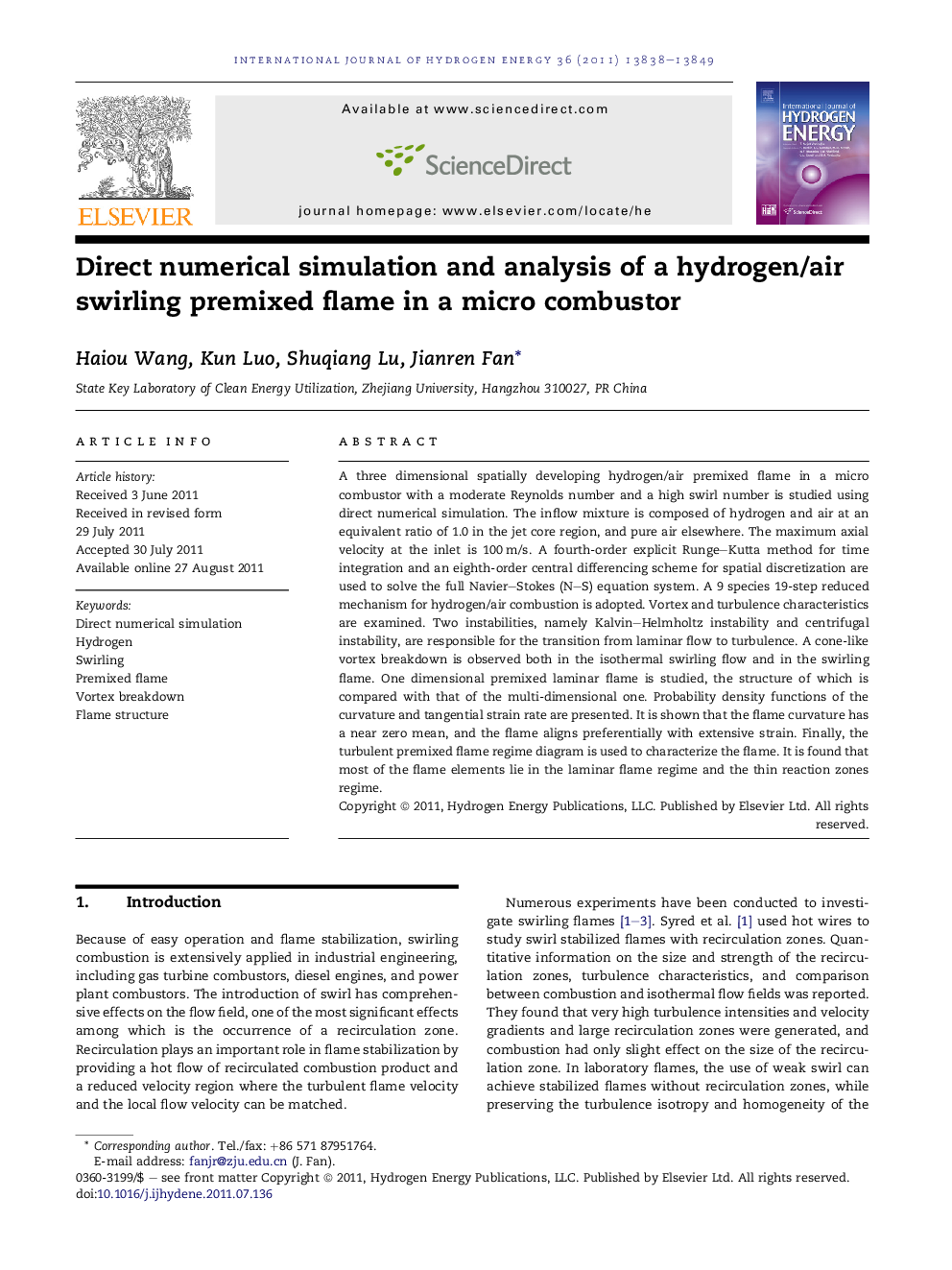| کد مقاله | کد نشریه | سال انتشار | مقاله انگلیسی | نسخه تمام متن |
|---|---|---|---|---|
| 1278731 | 1497572 | 2011 | 12 صفحه PDF | دانلود رایگان |

A three dimensional spatially developing hydrogen/air premixed flame in a micro combustor with a moderate Reynolds number and a high swirl number is studied using direct numerical simulation. The inflow mixture is composed of hydrogen and air at an equivalent ratio of 1.0 in the jet core region, and pure air elsewhere. The maximum axial velocity at the inlet is 100 m/s. A fourth-order explicit Runge–Kutta method for time integration and an eighth-order central differencing scheme for spatial discretization are used to solve the full Navier–Stokes (N–S) equation system. A 9 species 19-step reduced mechanism for hydrogen/air combustion is adopted. Vortex and turbulence characteristics are examined. Two instabilities, namely Kalvin–Helmholtz instability and centrifugal instability, are responsible for the transition from laminar flow to turbulence. A cone-like vortex breakdown is observed both in the isothermal swirling flow and in the swirling flame. One dimensional premixed laminar flame is studied, the structure of which is compared with that of the multi-dimensional one. Probability density functions of the curvature and tangential strain rate are presented. It is shown that the flame curvature has a near zero mean, and the flame aligns preferentially with extensive strain. Finally, the turbulent premixed flame regime diagram is used to characterize the flame. It is found that most of the flame elements lie in the laminar flame regime and the thin reaction zones regime.
► A three dimensional hydrogen/air premixed flame is studied using DNS.
► A cone-like vortex breakdown is observed both in the flow and in the flame.
► The size of the recirculation zone in the flame is about twice of that in the flow.
► The curvature has a near zero mean, and the tangential strain has a positive mean.
► Most flame elements lie in the laminar flame and the thin reaction zones regimes.
Journal: International Journal of Hydrogen Energy - Volume 36, Issue 21, October 2011, Pages 13838–13849